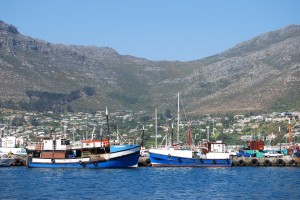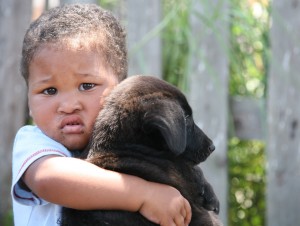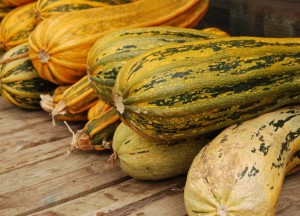CHAPTER < TWELVE - FINDING SUSTAINABLE SOLUTIONS CONTD.
 Globally the fishing industry is being revised, with authorities taking a tougher stance on catch quotas, the size of species caught and the fishing of protected species; many of which were previously fished to the point of extinction but which are now being allowed to recover.
Globally the fishing industry is being revised, with authorities taking a tougher stance on catch quotas, the size of species caught and the fishing of protected species; many of which were previously fished to the point of extinction but which are now being allowed to recover.
Besides enforcing restraint in the fishing industry, stricter laws and stiffer penalties are now also governing the shipping vessels of the sea, protecting ocean habitats and marine creatures from oil spillage and other environmental disasters. As we move into a people-abundant but food-scarce world of the future, every bit of food-producing innovation and protection will help, whether it derives from conventional sources or not. Hopefully by paying close attention to the needs of the land and the sea, and by employing all the previously mentioned and other future food producing initiatives, as yet un-envisaged, untested and un-utilised, we can reverse the global emergency of diminishing food supplies for the entire planet’s people.
And hopefully these practices will blaze the trail towards an environmentally sustainable tomorrow; ensuring that we can keep on feeding ourselves and the other species that have come to rely on us, well into the 21st Century, providing a reliable base of intelligence and innovation for other generations to build from when it becomes their turn to meet the daunting challenge of providing enough food for all the world’s people. In the meantime we can only carry on pushing agricultural boundaries and carefully harvesting the sea. Doing the best that we can in the hope that it is enough.
 But is the equation of balancing out the world’s food supply really as simplistic as ensuring that we have employed, and will in the future continue to employ, every technological and traditional food growing and restrained fishing option open to us? Or is the equation a lot more complicated than that? Unfortunately it is.
But is the equation of balancing out the world’s food supply really as simplistic as ensuring that we have employed, and will in the future continue to employ, every technological and traditional food growing and restrained fishing option open to us? Or is the equation a lot more complicated than that? Unfortunately it is.
Already in today’s world some 840 million people, including 200 million children, are going hungry. If we are to avoid even wider spread hunger in the future, it is imperative that all factors that relate to global food security have our utmost concern in the present, for almost enough food now could well be far too little food tomorrow.
Feeding the world’s hungry people in the future will depend on the continued improvements in agricultural technology and crop productivity that we now make in our fields and laboratories, as well as the restraints we impose on the fishing industry. However besides taking the utmost care of the land and sea, the global war on hunger will also be waged in our hearts and minds; with our intentions and attitudes determining the choices that we make. These choices, in turn, will depend on vital questions being asked and answered: questions that relate to cultural, economic, political and many other factors that stand quite apart from agricultural and fishing initiatives.
For example, some of the questions we need to ask ourselves are as follows: What crops are being planted on the croplands of the planet? And what are the criteria for their selection? Are they nourishing food crops such as potatoes, beans, barley, tomatoes, lentils and bananas, which are accessible enough in terms of price and availability to benefit the greatest number of the world’s people, allowing even the lowest-income countries to feed their citizens? Or is an inappropriate amount of valuable agricultural land being taken up with luxury food items which titillate the palates of a few affluent and demanding consumers, but have little broad-based nutritional or hunger-satisfying value?
Are non-essential crops such as flowers, which have little relevance in meeting the needs of the planet’s hungry populations, replacing food crops in too many farmlands around the world, allowing economics to outweigh ethical and moral considerations?
 Is the grain, either wheat or corn that is produced, being consumed directly by humans in the most economical way possible or is an expensively high percentage of it being used as livestock feed with which to satisfy the meat- and milk-intensive diets of an increasing number of people living in developed and developing countries?
Is the grain, either wheat or corn that is produced, being consumed directly by humans in the most economical way possible or is an expensively high percentage of it being used as livestock feed with which to satisfy the meat- and milk-intensive diets of an increasing number of people living in developed and developing countries?
Is it not possible through media-awareness and consumer campaigns to convert people who eat a high proportion of meat and milk-based products in their diet to change to a predominantly grain-, fruit- and vegetable-based or even a vegetarian diet, which has been found not only to promote better health and less expense, but which will also help to relieve the pressure on overgrazed rangelands around the globe, ensuring that the crops that are produced, go much further?
Bearing in mind the truism “Give a man a fish, and he has fish for a day; teach a man to fish and he has fish for the rest of his life”, are we in the developed world doing enough with regard to teaching poverty-stricken populations in the developing world how to grow food for themselves, using the limited resources at their disposal? How is the food that is being produced, being distributed? And is it not possible to distribute it in a more equitable way so that all people can benefit from surpluses and be relieved of the destabilising pressures that arise from desperate shortages? Is this, in fact, a realistic notion for us even to contemplate? And can we afford to be so idealistic in an imperfect world?
One of the members of the ill-fated Scott Antarctic Expedition of the early 20th Century, Apsley Cherry-Garrard, wrote in his book The Worst Journey in the World: “Any age, new or old, wants courage and faith.” In a way this quotation sums up the challenge of living in the 21st Century, with the feeding of the world’s masses representing for our generation, a problem of formidable proportions. But then in terms of human history we are no exception.
 Finding and producing enough food for everyone has never been an easy task, in any age. Since agriculture first supplanted hunting and gathering approximately 10 to 12 millennia ago, it has occupied much of human thinking and endeavour, requiring no small measure of courage and faith to meet the requirements of ever-growing populations.
Finding and producing enough food for everyone has never been an easy task, in any age. Since agriculture first supplanted hunting and gathering approximately 10 to 12 millennia ago, it has occupied much of human thinking and endeavour, requiring no small measure of courage and faith to meet the requirements of ever-growing populations.
However the scale of the challenge has always been proportionate to the number of people who needed to be fed. With six billion people already living on our planet and with billions still to be born within the first decades of this century, the world has never known a challenge of this magnitude. It is one for which we will need a multitude of miracles in order to transform food production into marvels of compounded returns. But then we have already achieved many miracles.
Every new laboratory innovation that is discovered, every new crop strain that is developed; every new process of agricultural production that is initiated, every quantum leap of intelligence, every decision of grace and unselfishness, every act of compassion and human kindness, every undertaking of vision and determination, is a miracle in itself. Who says that at our best we are not the miracle children of Mother Earth?…